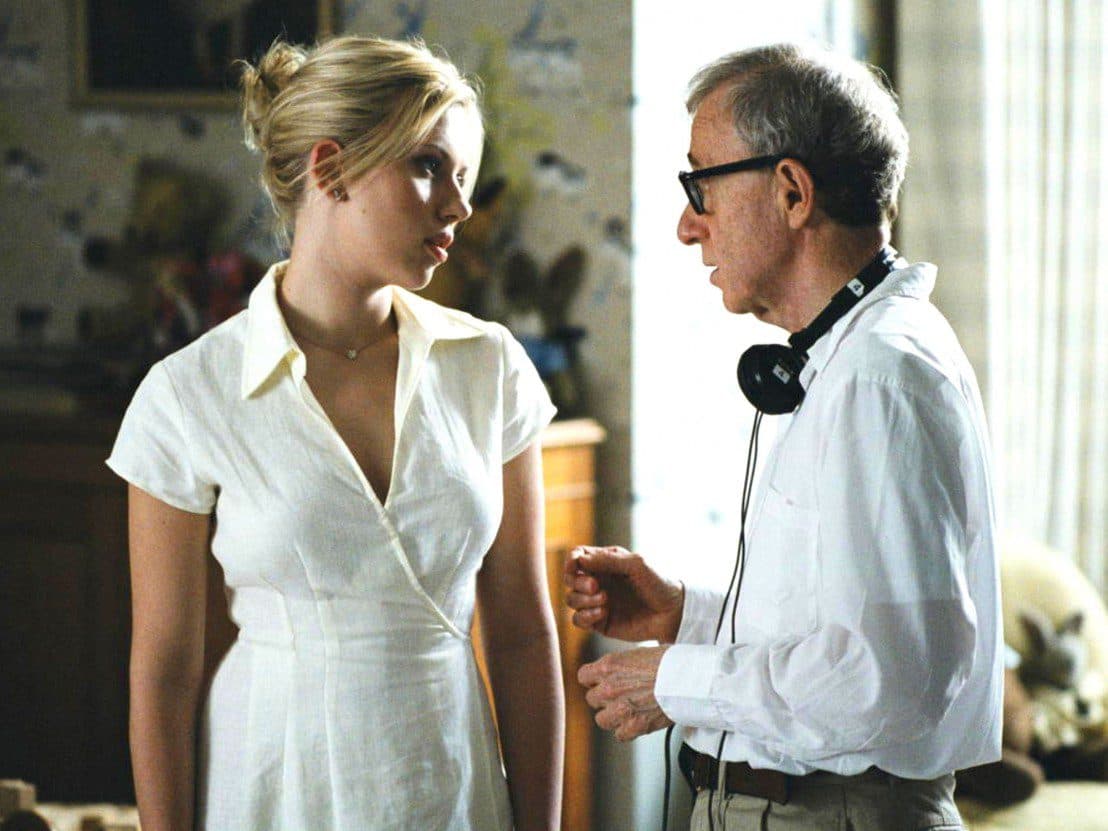Let's discuss "Mrs. Dalloway." You may have seen it mentioned in literary circles or on syllabi. Is it an important book that collects dust, or does it hold real charm? Virginia Woolf's modernist masterpiece invites us to explore its depths.
I. Decoding "Mrs. Dalloway": More Than Just a Party
First, is there a "Mrs. Dalloway" film? Yes! Released in 1997, directed by Marleen Gorris, starring Vanessa Redgrave as Clarissa Dalloway. It aims to adapt Woolf's intricate novel. Is it a good movie? Opinions vary. Some think it faithfully captures the novel's essence, while others feel it loses some magic. Watch it if you’re curious, but the book provides deeper understanding.
What makes "Mrs. Dalloway" special? Published in 1925, it resonates nearly a century later. It’s not a plot-driven thriller. The novel invites readers to explore the human condition. Woolf uses a single day in Clarissa's life to delve into profound themes like time and memory.
Consider our lives. They aren't neat or linear. They are messy and fragmented. Woolf captures this beautifully, or perhaps chaotically. She invites readers into her characters' minds, enabling them to feel the complexity of their thoughts and emotions. The exploration of time and memory is central to "Mrs. Dalloway." It examines how it feels to live, remember, and anticipate in the span of one day.
There's more than existential pondering. The novel addresses the impact of war on individual psyche. World War I casts a shadow over the story set in peacetime London. Through the character of Septimus Smith, a war veteran with shell shock, Woolf portrays conflict's psychological wounds. The juxtaposition of Clarissa’s party preparations against Septimus’s madness highlights society's superficial normalcy and hidden trauma.
Then there's the dance between perception and reality. Woolf blurs lines between real and imagined, felt and expressed. Characters’ perceptions shift and collide. Is Clarissa truly happy? Is Septimus mad? Woolf doesn’t provide easy answers but encourages questioning reality’s nature. This interplay of internal experience and external reality makes "Mrs. Dalloway" both compelling and challenging.
Why is "Mrs. Dalloway" sometimes called "difficult to read"? Woolf immerses readers in stream-of-consciousness flow. Imagine overhearing unfiltered thoughts. Ideas jump from one to another without a clear narrator. Reading "Mrs. Dalloway" mimics that chaos. As a review mentioned, it "digresses between reality, flashbacks, and imaginary visions." You’ll navigate different characters' minds while tracking timelines.
Woolf famously avoids chapters. Yes, no breaks to provide relief or signal progress. It’s one continuous flow, matching the stream-of-consciousness style. This structure can disorient readers trying to piece together the narrative puzzle. It's like following a conversation in a crowded room – exhilarating yet demanding. But the effort pays off.
Despite these challenges, "Mrs. Dalloway" remains popular. Why? A part lies in Woolf's innovative use of stream-of-consciousness. It makes the novel unique and immersive. She perfected this technique for creating intimate portraits of characters. It's a form of literary voyeurism, offering profound insights into their lives. Readers experience the world as Clarissa and Septimus do, feeling their fears and fleeting beauty. That is special.
II. Meet the Players: Unpacking the Characters of "Mrs. Dalloway"
Let’s meet key players, starting with Clarissa Dalloway herself. Why "Mrs. Dalloway"? The name holds weight. As literary analysts note, calling her "Mrs. Dalloway" emphasizes her status as her husband's property. This subtle statement highlights early 20th-century societal constraints on women. Clarissa's identity ties to her marriage.
But Clarissa is more than "the hostess." Who does she love? Love is messy and multifaceted. Throughout the novel, Woolf hints at Clarissa's affections for Richard, Peter Walsh, and Sally Seton. Studies on love in "Mrs. Dalloway" show complexities in adult emotions and relationships. She's married to Richard, a solid man, yet there's a spark with Peter reflecting a passionate past. Sally embodies Clarissa's youthful spirit. It’s a love constellation showcasing various emotional facets.
What age is "Mrs. Dalloway" appropriate for? Publishers generally recommend a reading age of 15 years and up. It explores mature themes like mental illness and marital complexities, making it unsuitable for younger readers. For teens and adults, it offers rich reading experiences and thoughtful discussions.
How old is Clarissa? She's a "51-year-old" preparing for a party. The novel unfolds on "a single June day in 1923," reflecting her life at this moment. Time, aging, and mortality are significant themes here. This isn’t a tale of youth; it's about middle age reflections.
Let’s discuss beginnings. What’s the first line of "Mrs. Dalloway"? It's iconic: "Mrs. Dalloway said she would buy the flowers herself." This line establishes Clarissa's agency and desire for control in domestic tasks. Buying flowers symbolizes creating beauty and life in her world. This seemingly simple act hints at deeper themes.
desires and motivations.
What is wrong with Clarissa's health? Clarissa Dalloway has recovered from influenza. The illness left her feeling fragile. There are deeper issues. Some say she faces "bipolar disorders." Woolf struggled with her own mental health. Clarissa’s emotional shifts reflect this pain. Her health shapes her day.
Why is Clarissa Dalloway unhappy? Despite her privilege, she feels restless. Beneath her social life, she battles intrusive thoughts. Aging and identity disturb her. She reflects on choices and relationships. It's a midlife crisis, Woolf style. Throwing a party masks her deep questions about life and love.
What does Clarissa discover at the end of "Mrs. Dalloway"? At her party, she learns of Septimus Smith's suicide. Initially shocked, she eventually admires his choice. She sees it as preserving his happiness. Septimus's death affirms life for Clarissa. Woolf links life and death. This leads to clearer insights on connection and appreciation of her own life.
Let's look at Septimus for a moment. What mental illness does he represent? His struggle links directly to wartime trauma. He experiences "delusions," showing signs of "PTSD and depression." World War I haunts him, preventing reintegration into normal life. His mental health declines throughout the day, leading to his sad end. He exemplifies war's psychological toll.
Focusing back on Clarissa's love life, why does she choose Richard over Peter? It’s a matter of stability. Analyzing her choice reveals Clarissa's preference for Richard's steadiness over Peter's volatility. Peter is exciting but emotionally demanding. Clarissa opts for practicality over passion, leading to her choice.
Does Clarissa regret marrying Richard? It’s not a clear answer. She acknowledges giving up a passionate life. However, she does not fully regret marrying Richard. There is a hint of nostalgia in her reflections. She recognizes the paths she didn’t take. It’s a nuanced exploration of marriage decisions explored further in literary research.
Considering a symbol in the story: the old woman in the window. What does she represent? She is a half-forgotten figure, seen from afar. She symbolizes the soul's privacy and aging loneliness. Reminding Clarissa of her own fears about aging, she echoes themes of isolation entwined with social life.
Speaking of trauma, let's discuss "shell shock." What is this illness? It originated from World War I. Now it’s recognized as "Post Traumatic Stress Disorder." This condition emerges from soldiers' stress in battle. Septimus embodies shell shock in the narrative, revealing his mental disintegration. Woolf captures symptoms of PTSD before it was recognized, providing depth to Septimus’s turmoil.
Why can't Richard tell Clarissa he loves her? Richard struggles with emotional expression. He plans his confession but remains too repressed. This highlights the emotional distance present even in marriage. This tragedy embodies male societal norms regarding emotions, creating barriers to deeper connection.
Yet amid emotional chaos exist profound moments of beauty. What was Clarissa's most exquisite moment? It was a kiss from Sally Seton on the terrace at Bourton. This memory symbolizes youthful passion and joy. The same-sex kiss resonates deeply with Clarissa over the years, full of emotion and desire, echoing themes of love explored in academic literature.
Now, consider a mundane object: the knife in "Mrs. Dalloway." Owned by Peter Walsh, it appears during his visit. He pulls it out in an emotional moment. It symbolizes violence and the complexity of his character. This small detail carries important symbolic weight in Woolf's narrative world.
Returning to mental illness, Septimus exhibits delusions linked to PTSD and depression. This remains a central theme in the novel, highlighting war's devastating mental health impacts and societal indifference to such crises.
Does Peter still love Clarissa? Yes, indeed. Even after years apart, he retains strong feelings. He notices her loneliness and unhappiness. Their paths diverged, yet the poignant 'what if' remains between them. Peter's feelings add complexity to themes of love and loss in the narrative.
Finally, was Mrs. Dalloway in love with Sally? Yes, in a profound way beyond mere friendship. Clarissa’s connection to Sally carries a "pure and integral feeling." It differs from her feelings for men and reveals emotional depth within their bond. This unfulfilled love speaks to women's relationships experiences and societal limitations on same-sex love.
Shifting to Peter Walsh, why didn't Dalloway choose him? Clarissa faced various reasons for her choice. His self-obsession was too much, threatening to drown her.
Perhaps Clarissa knew Peter Walsh was too much for her. "She rejected Peter Walsh," explains a source. He lacked stability, unlike Richard Dalloway. Peter was self-obsessed and needy. Stability defined Clarissa's choice. She sought security, while Peter's restless nature did not align with her needs.
Ultimately, Clarissa rejected Peter for practical reasons. A lack of passionate love played a role. Richard provided predictability. Although Peter might offer excitement, Clarissa desired stability and social decorum. Her choice reflects her personality and understanding of her desires.
In an unusual twist, some interpretations link Peter Walsh with Mary Jane Watson. Yes, that Mary Jane from Spider-Man. This adds a pop-culture angle and may resonate more with comic fans than literary scholars. It gives a hint of how characters evolve beyond their narratives. However, Peter's marital status remains uncertain in "Mrs. Dalloway."
Let's discuss Sally Seton, Clarissa's kiss-inducing friend. Who did Mrs. Dalloway kiss? It was Sally. This kiss is a key memory for Clarissa. It symbolizes youthful passion and a bond that transcends societal norms. "The kisses Clarissa remembers...are crucial to Woolf's resistance against the temporality of death," literary analyses state.
Sally Seton embodies youth's recklessness and passion in "Mrs. Dalloway." For Clarissa, Sally symbolizes the possibilities she forfeited by marrying Mr. Dalloway. Sally represents a more unconventional life that Clarissa chose not to lead. She signifies lost opportunities and the allure of a life less confined by social expectations.
Now, let’s look at Septimus Warren Smith. He suffers from PTSD in "Mrs. Dalloway." Septimus embodies the psychological scars of war. His experience highlights the devastating effects of conflict and the urgent need for mental health understanding. His narrative contrasts sharply with Clarissa’s, showing a tragic aspect of the human experience.
Elizabeth Dalloway is Mrs. Dalloway's daughter. Elizabeth is Clarissa and Richard's only child. She represents a new generation's perspective on life. Elizabeth stands at a crossroads, exploring different paths. Her presence offers hope and change within the complexities of older generations. She's a symbol of the future, navigating her own journey.
III. Themes and Motifs: Decoding the Deeper Meanings
Let’s explore deeper themes in "Mrs. Dalloway." Key motifs enrich the narrative's enduring power. Major themes involve time, memory, and human experience. Woolf shifts gracefully between past and present, blending thoughts with events. Memory becomes a dynamic force shaping emotions.
The impact of war is another critical theme. Septimus’s struggles serve as a reminder of the trauma caused by conflict, even in peace. The novel portrays the illusions faced by veterans, showing society's neglect. It questions the hidden costs of war and its lasting effects on individuals.
The relationship between perception and reality is often challenged. Characters’ inner lives frequently contrast with their outward appearances. What constitutes reality? Woolf compels readers to analyze their understanding of existence. The subjective nature of experience is central to the narrative.
Lastly, communication versus privacy is another theme. Despite her social life, Clarissa often feels isolated. Characters struggle to connect with each other fully. This tension between desire for connection and need for privacy is palpable throughout the story. It underscores the solitude within individual consciousness.
Beyond themes, motifs enhance the novel's meaning. Flowers symbolize love and femininity. Clarissa buying flowers is an act of bringing joy into her life. Flowers represent fleeting beauty but also fragility, echoing human happiness's impermanence and underlying mortality.
"Bourton" is crucial in Clarissa's past. It shaped her identity and symbolizes lost paradise. This place held youthful freedom and passionate connections, particularly with Sally. Memories from Bourton haunt Clarissa, reflecting nostalgia and formative experiences that contrast with her current life.
Now, what about Thanatos in "Mrs. Dalloway"? It's often seen as reflecting Woolf's own narrative. Derived from Freudian psychology, Thanatos represents the death drive. Throughout the novel, this concept manifests in the acute awareness of mortality and Septimus’s tendencies towards self-destruction.
Why is "Mrs. Dalloway" rated PG-13, especially the film? The rating refers to brief violence, mild profanity, and short nudity. The novel itself does not depict explicit content, but the film includes instances that merit this rating. Though emotionally intense, the novel's themes may exceed the maturity level suggested by the rating.
Is "Mrs. Dalloway" LGBTQ+? Certainly, in many aspects. The novel explores bisexuality, homosexuality, gender fluidity, and queer identity. Clarissa’s bond with Sally mirrors same-sex desire, questioning societal norms around sexuality. It may not fit modern definitions of a "lesbian novel," yet it challenges boundaries about non-normative identities significantly.
Was "Mrs. Dalloway" controversial? Yes, in various ways. It confronted British society's hypocrisy regarding war casualties. Through Septimus’s vivid PTSD portrayal, Woolf highlighted how war's glorification overshadowed the psychological toll on individuals. This perspective was contentious in a society eager to celebrate victory.
Second, the novel was "controversial as it hinted at the homosexual relationship between Sally Seton and Clarissa Dalloway." In a time when homosexuality faced taboo, subtle allusions to same-sex desire were daring. Woolf's portrayal of female intimacy pushed boundaries in literature, shaping the novel's controversial image.
Finally, consider the "irony" in "Mrs. Dalloway." Richard gives Clarissa flowers after she has bought them. This detail shows gentle irony, a disconnect in husband-wife communication. Richard’s gesture, meant to express love, becomes redundant due to Clarissa's actions. This highlights the novel's theme of communication and marital complexity.
To conclude, "shell shock" in "Mrs. Dalloway" represents "Post-traumatic Stress Disorder impacting those during and after the Great War." This motif highlights a tragic reality embedded in the novel. It serves as a reminder of the human cost of conflict throughout history.
IV. Virginia Woolf and Context: Behind the Author
Let's step back from "Mrs. Dalloway" and consider Virginia Woolf's life and work.
Is there a "new movie about Virginia Woolf"? Yes, an "upcoming film" titled "Night and Day" is based on her novel. This "British/German film adaptation" promises a fresh take on Woolf's work. Keep an eye out for its release if you are a Woolf fan.













Responses (0 )